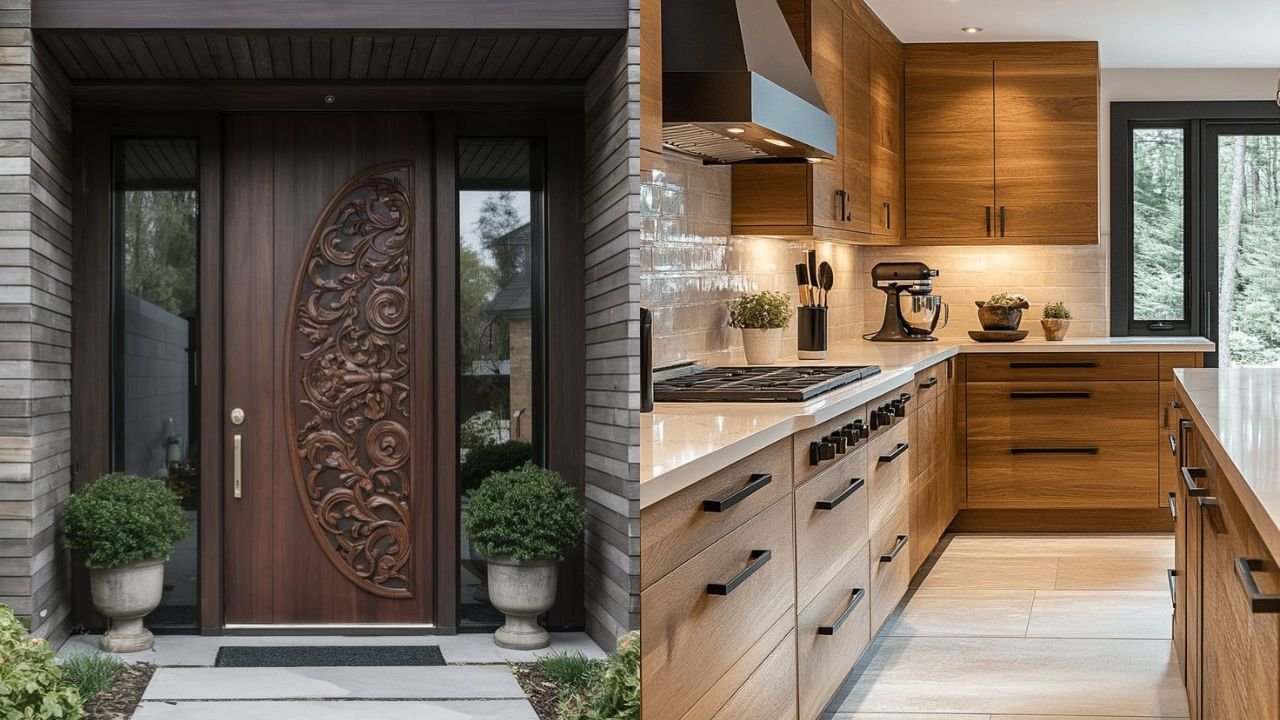
Teak wood is one of the most valuable and sought-after hardwoods in the world.
Known for its strength, durability, and natural beauty, it has been used for centuries in shipbuilding, furniture making, and architectural projects.
This guide explains what teak wood is, its unique properties, main uses, benefits, and why it continues to be a top choice in both traditional and modern design.
Teak wood comes from the Tectona grandis tree, native to South and Southeast Asia. Countries like India, Myanmar, Thailand, and Indonesia are major producers. The wood is golden to dark brown in color and develops a richer patina with age.
Its grain is straight or wavy, giving a natural texture that enhances its appearance. Unlike many other types of wood, teak contains natural oils that make it resistant to water, pests, and decay.
Historically, teak was used for building ships due to its resistance to rot and seawater damage. Today, it remains one of the most reliable choices for long-lasting furniture and outdoor structures.
Teak is classified as a hardwood, meaning it is dense and strong. Despite its toughness, it can be shaped and polished easily, making it versatile for both intricate designs and large constructions.
In summary, teak is a premium wood known for its balance of beauty, durability, and performance.
Teak is highly valued for its unique properties:
Durability : It can last for decades without losing strength. Furniture made of teak often lasts for generations.
Water Resistance : Thanks to natural oils, teak resists water absorption, preventing warping or cracking.
Natural Oils : These oils act as built-in preservatives, protecting against termites, fungi, and insects.
Another property is its ability to withstand harsh weather conditions. Unlike many other woods, teak does not expand or contract significantly when exposed to moisture or heat. This stability makes it ideal for both indoor and outdoor use.
Its natural color ages gracefully. Over time, untreated teak develops a silver-grey patina, which is also prized for its beauty.
These properties explain why teak is considered a premium material and why it remains in high demand worldwide.
Teak wood is versatile and used in many applications:
Furniture : Dining tables, chairs, wardrobes, and beds made from teak are strong, stylish, and long-lasting.
Flooring : Its hardness makes it suitable for high-traffic areas while adding warmth and elegance.
Outdoor Applications : Teak is ideal for garden furniture, decks, and boat building because it resists rain and sunlight.
In addition, teak is widely used for carvings, window frames, doors, and decorative panels. Its aesthetic qualities make it popular in luxury homes and hotels.
Due to its high resistance to rot and pests, teak has also been used for centuries in shipbuilding. Even today, it remains the wood of choice for yachts and outdoor flooring.
Whether for interior elegance or outdoor resilience, teak wood proves its worth in almost every application.
Teak wood offers numerous benefits that justify its premium price:
Longevity : With proper care, teak furniture and flooring can last for several decades.
Aesthetic Appeal : Its golden-brown shade and natural grain make it visually appealing.
Low Maintenance : Unlike many other woods, teak requires minimal upkeep to retain its quality.
Teak’s natural oils reduce the need for chemical treatments, making it more eco-friendly. Its resistance to termites and fungi saves homeowners money on repairs and replacements.
Another benefit is versatility. Teak blends well with both modern and traditional décor, making it a timeless material.
These benefits explain why teak is considered one of the most valuable hardwoods for homes, offices, and outdoor projects.
Compared to other hardwoods like oak, mahogany, or walnut, teak stands out for its durability and weather resistance. While other woods may require constant maintenance, teak retains its strength and beauty naturally.
Although teak is more expensive, the long-term value outweighs the cost. A teak table may last for generations, whereas furniture made from other woods may need replacement after a few years.
Its ability to withstand water exposure makes it far more reliable for outdoor furniture than most alternatives. This advantage alone has made it the standard choice for garden and patio furniture worldwide.
For buyers seeking a blend of luxury, durability, and timeless appeal, teak remains unmatched.
Caring for teak wood is simple:
Regular Cleaning : Wipe with a soft, damp cloth to remove dust. Avoid harsh chemicals.
Polishing : Use teak oil occasionally to maintain its golden color. If left untreated, teak develops a silver-grey patina, which many people appreciate.
Outdoor Protection : For outdoor furniture, occasional cleaning with mild soap and water helps maintain quality.
Unlike many other types of wood, teak does not require constant polishing or sealing. Its natural oils provide long-term protection.
By following simple care routines, homeowners can keep their teak furniture and flooring in excellent condition for decades.